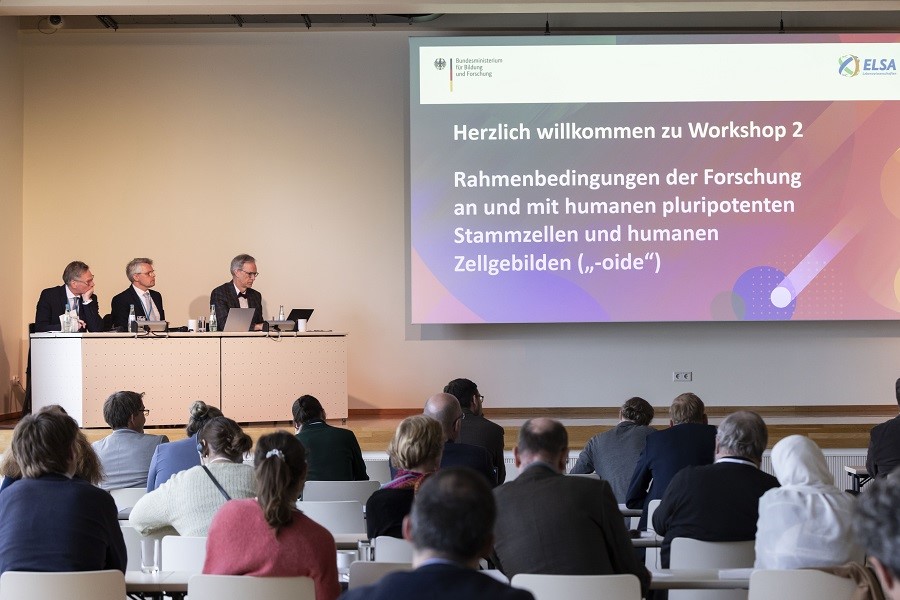Workshop 2 was led by Hans-Georg Dederer and presented by Ralf Müller-Terpitz. One key point of the thesis paper was to propose a new bioethics law as an omnibus law, establishing a legal framework for using human embryos and pluripotent stem cells in research and therapy. A new "Embryo and Stem Cell Research Act (ESFoG)" aims to establish the material and formal requirements for using human embryos and embryonic stem cells, including their derivation for high-level purposes. For ethically sensitive uses, the ESFoG should apply not only to embryonic stem cells but also to induced pluripotent stem cells. The legal framework set by the Bioethics Act should be regularly reviewed in light of scientific and medical advances over several years and adjusted as needed.
Thesis paper 2 – Original version

BMBF / bundesfoto
The discussion focused on specific theses, which were critically examined. First, the characterisation of legislative "lethargy" and the "solidification" of the legal framework (Theses 1 and 3) were questioned as justifications for the proposed new regulations. This is because it remains uncertain whether the ethical and (constitutional) legal values underlying the current legal framework have fundamentally changed.
On the other hand, it became clear that researchers favour a pragmatic, streamlined regulation that considers laboratory practice. The benefits of hES and iPS cells for cell and tissue replacement in treating many previously incurable, often serious diseases were undisputed. The question was raised whether simply modifying the existing StZG could be an option for research and therapy, removing the biggest obstacles to stem cell research and stem cell-based treatments.
Ethics and law experts debated whether the embryo's status could hinder a law like the proposed ESFoG or whether status assumptions based on graduated or balanced concepts could, instead, create viable pathways for action. In this context, the debate also addressed whether and how the term "embryo" should be legally defined (Thesis 5).
Significant discussions emerged on issues related to reproduction. This initially focused on the term "fertility research" and the use of artificial gametes, as mentioned in Thesis 10. If fertilisation experiments were conducted with artificial gametes, they would create research embryos, raising ethical and legal concerns. From a scientific perspective, doubts were raised about whether stem cell-based gametes could ever be used for reproduction or infertility treatment. There was consensus that embryoids should not be used for reproduction (Thesis 9).
The proposal to assess an embryo's developmental potential when applying for its creation was criticised. Since assessing an embryo's developmental potential would require transfer into a natural or artificial uterus –an ethically unacceptable and therefore impossible step – the notification requirement was met with criticism.
The group disagreed on whether brain organoids derived from iPS cells should be subject to regulation (Thesis 11). While no scientific need for action was identified, the ethical perspective supported requiring authorisation. Further discussion addressed whether iPS cells should be legally regulated (Thesis 7) or if doing so would overly restrict research.
Finally, it was emphasised that society must be involved in developing any new law. In this regard, wording should be carefully chosen to avoid triggering misleading perceptions. For example, the term "artificial" gametes may suggest synthetically produced germ cells rather than those biotechnologically derived from human stem cells. The term "brain organoids" could be replaced with "cerebral organoids" for a more precise and neutral description.
The author revised and expanded the thesis paper based on the discussion, but its key statements remained largely unchanged.